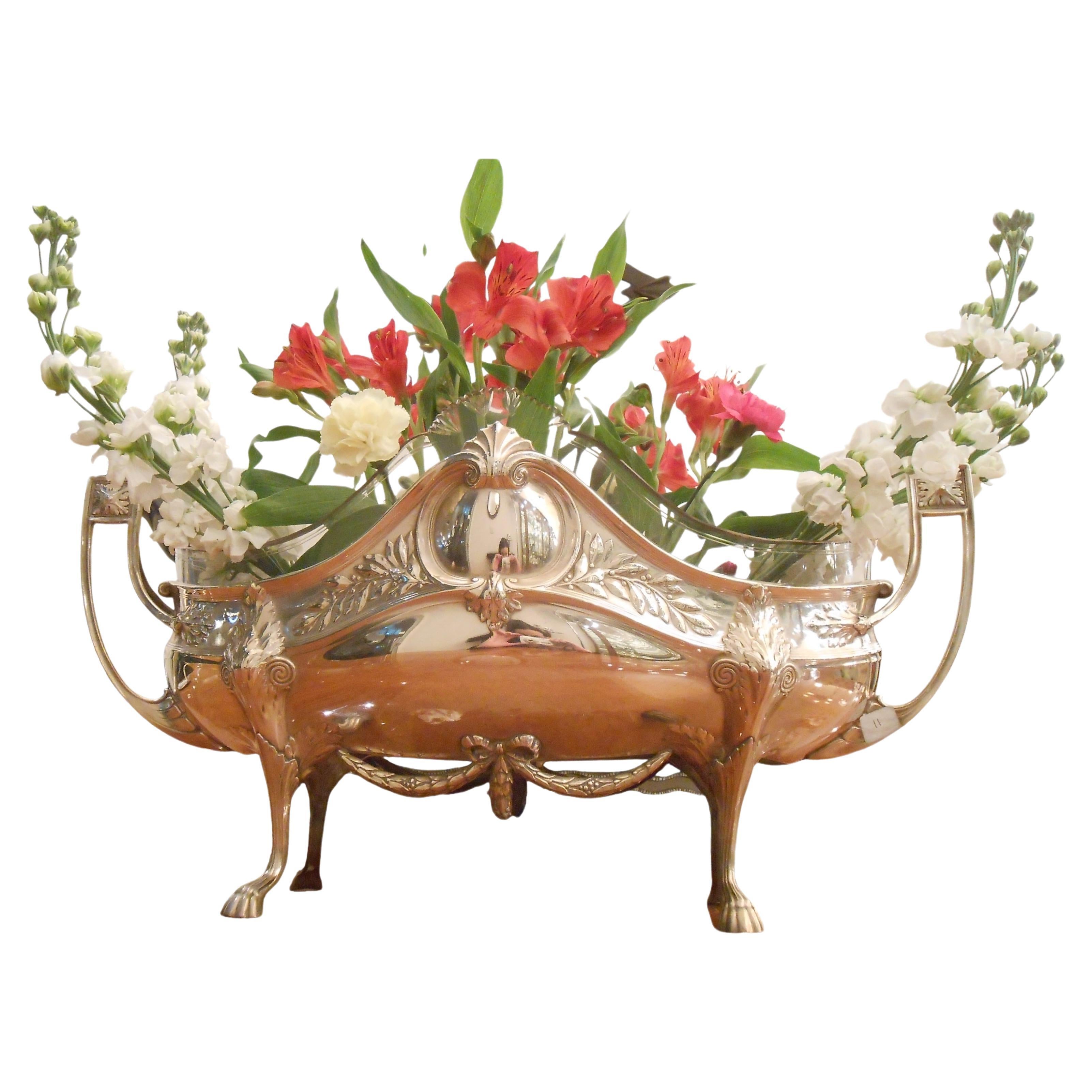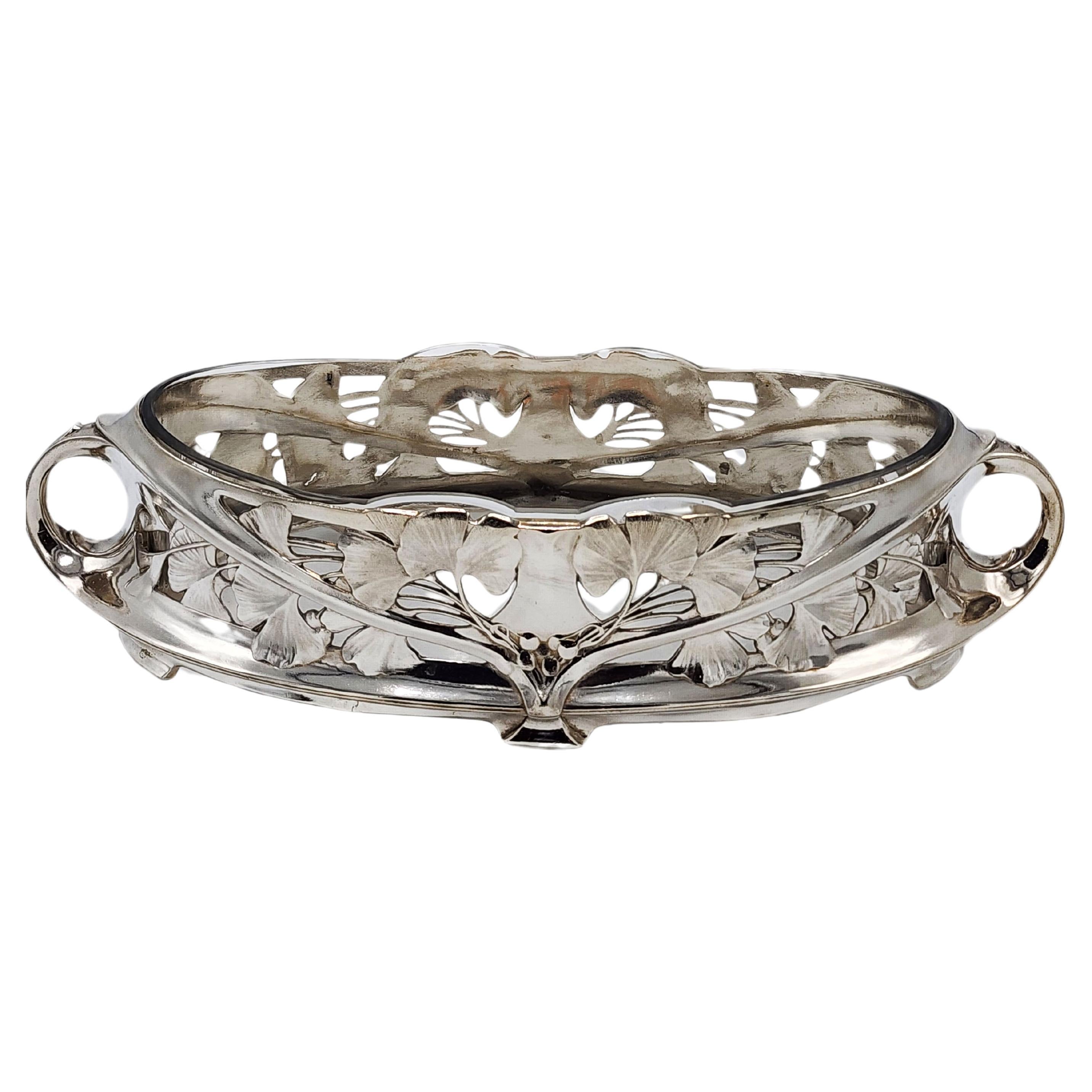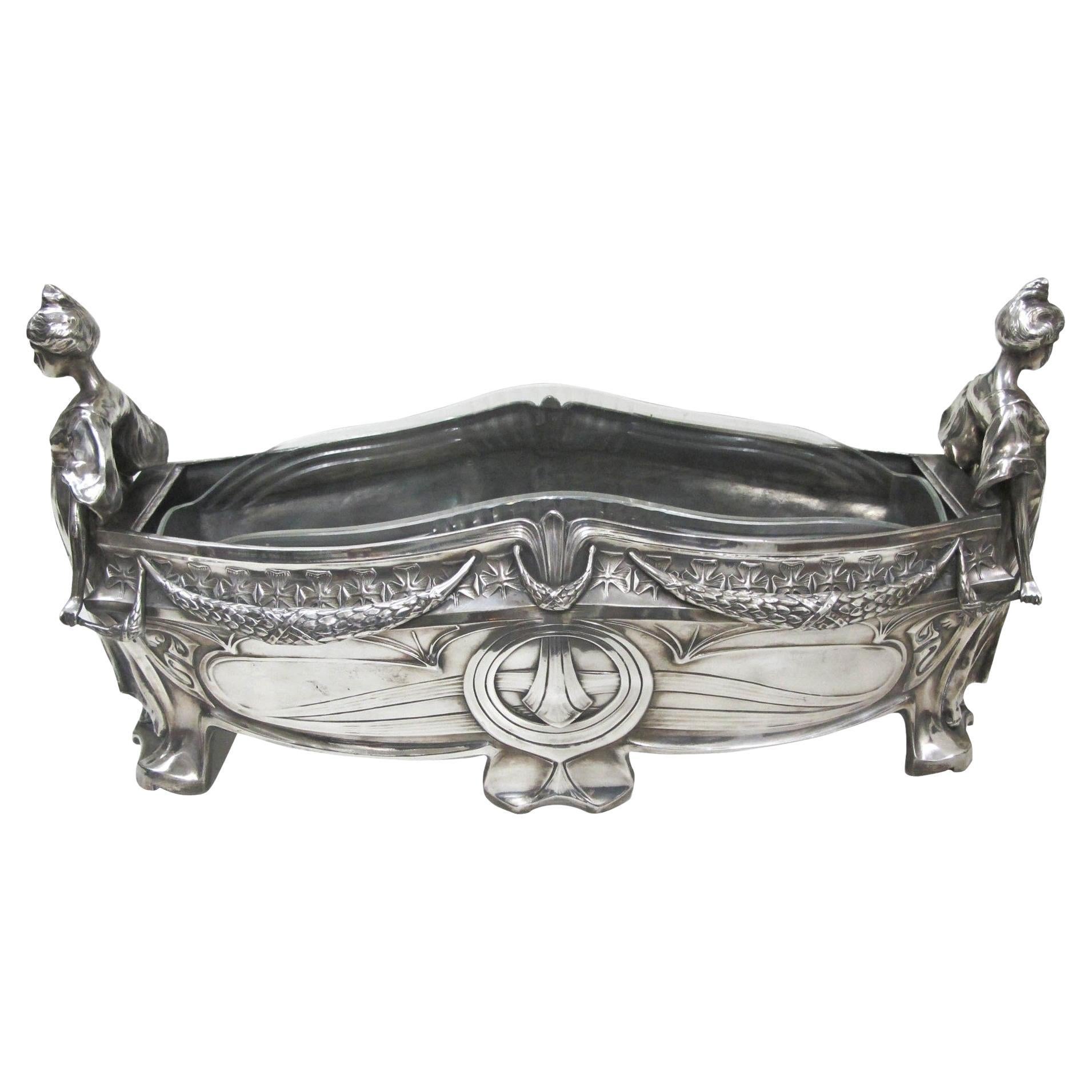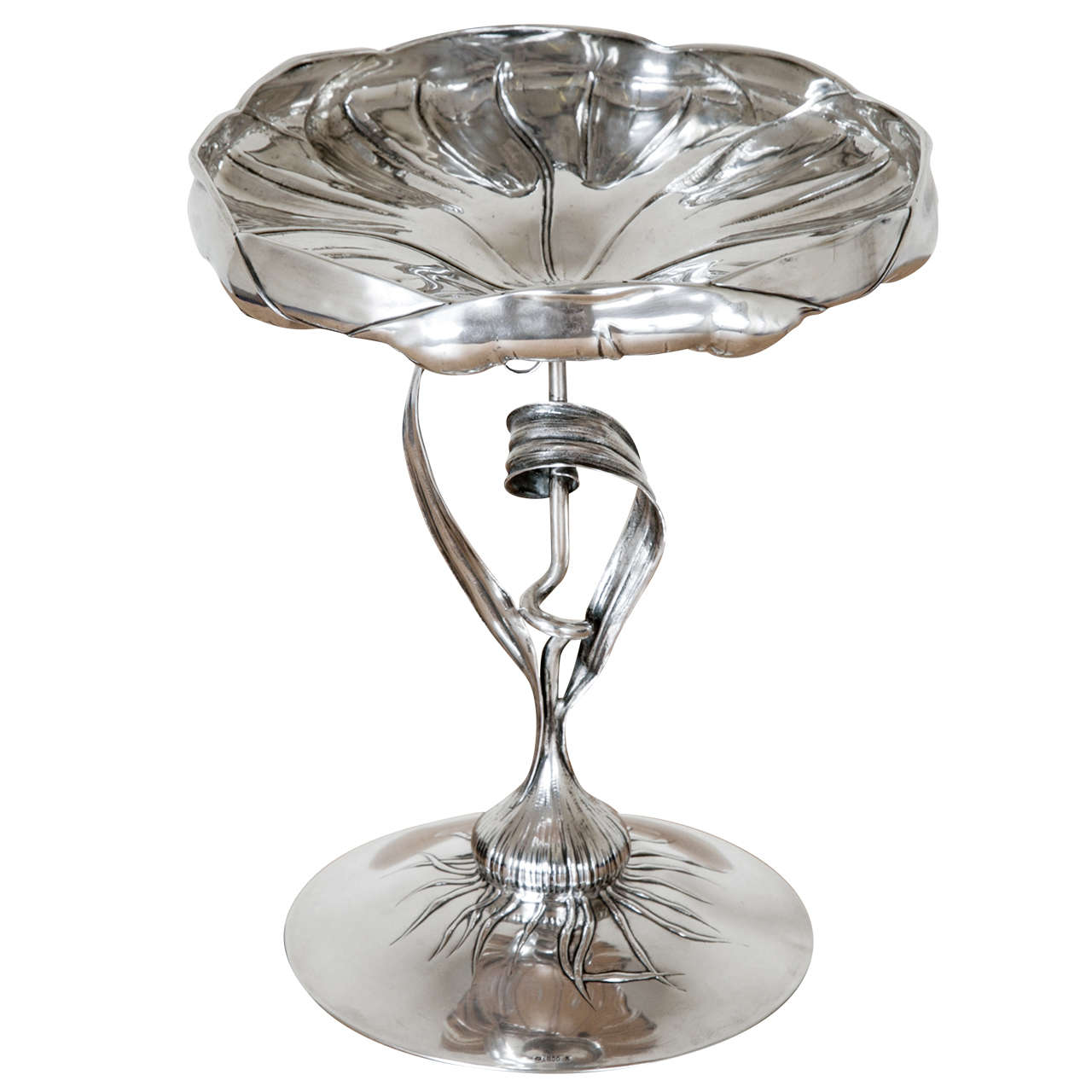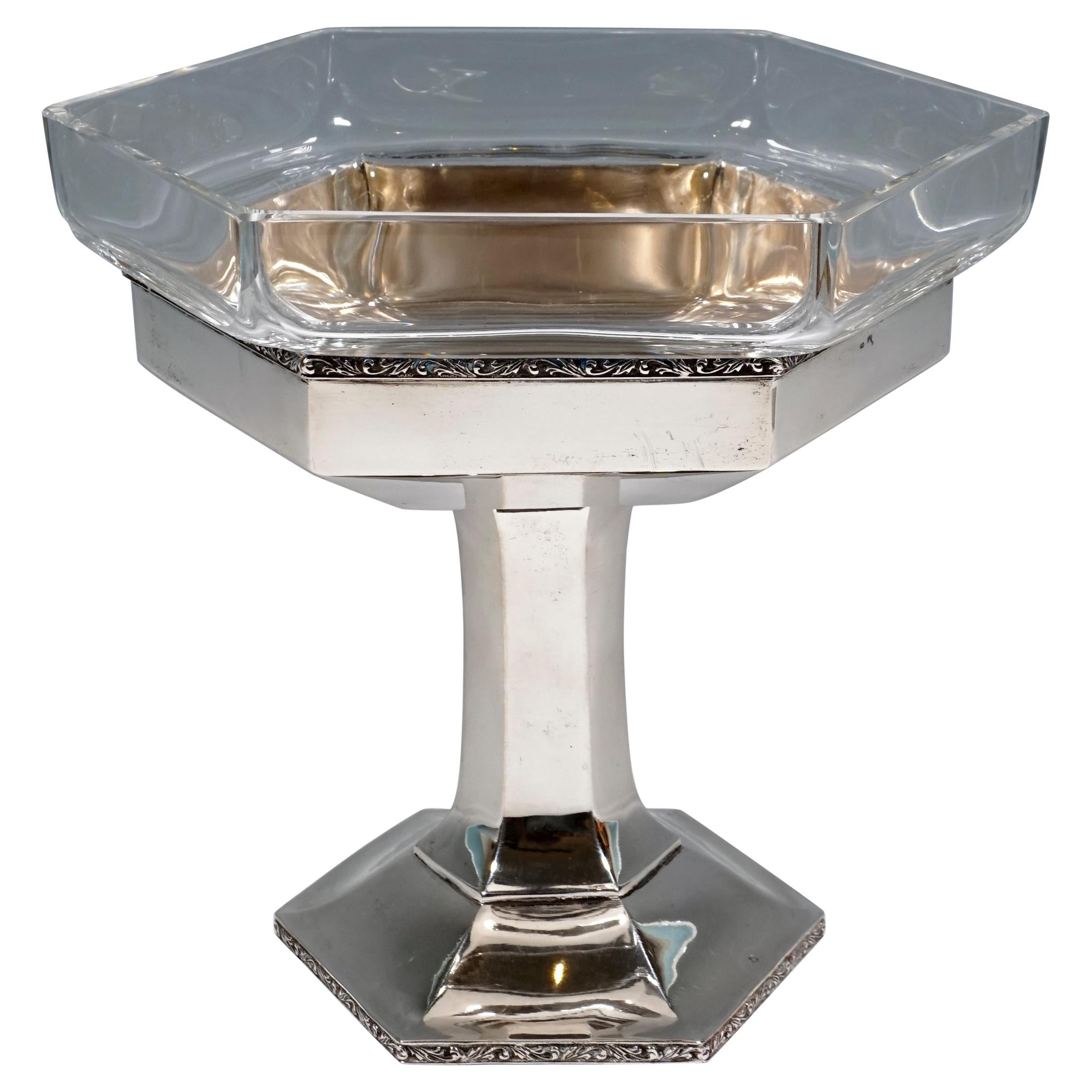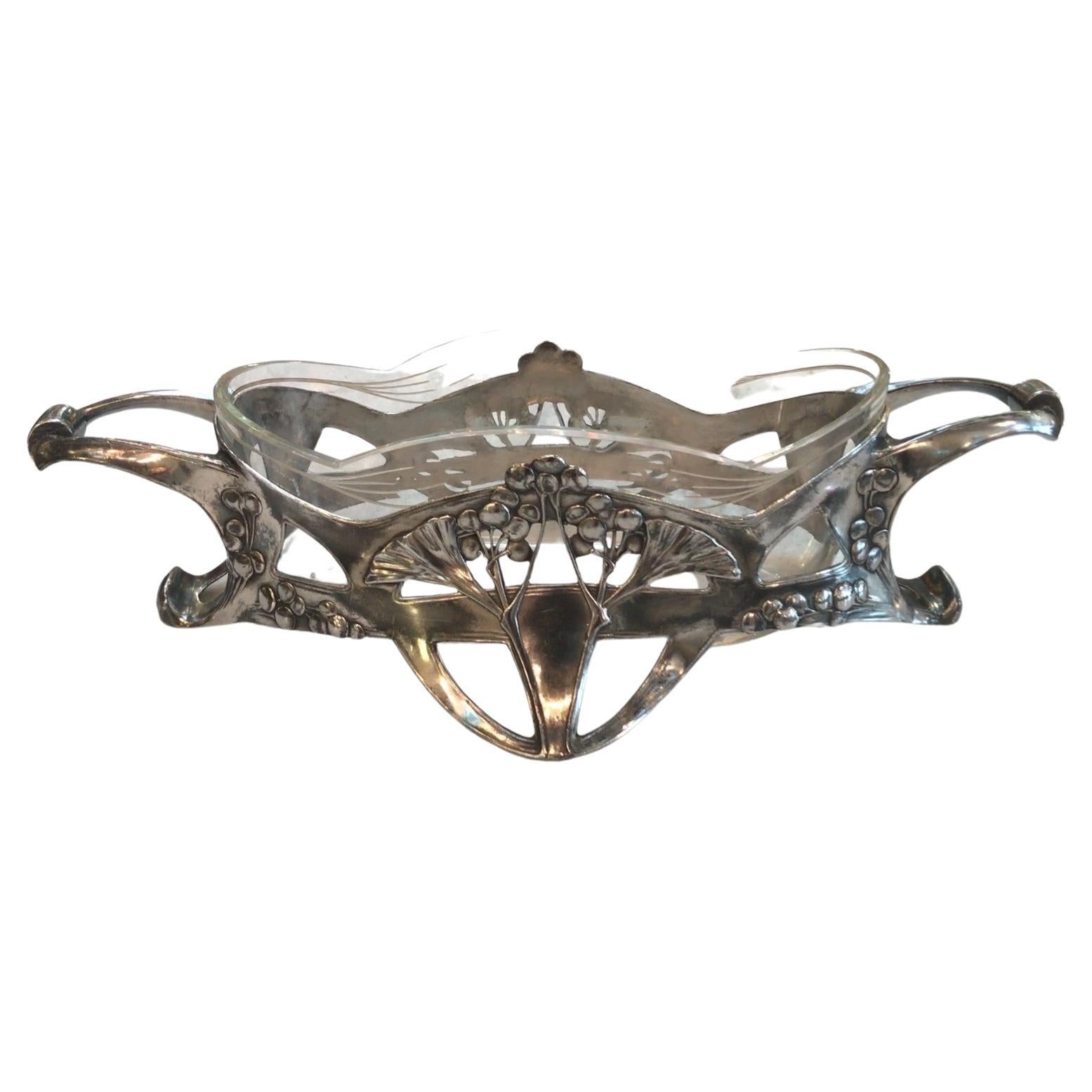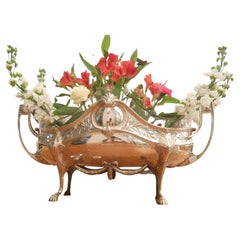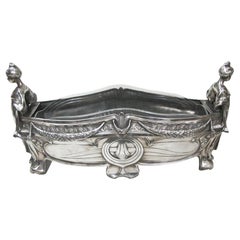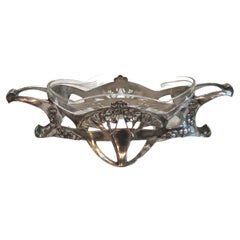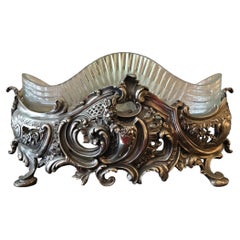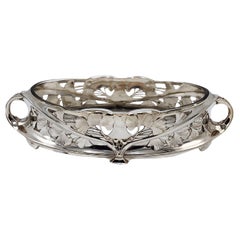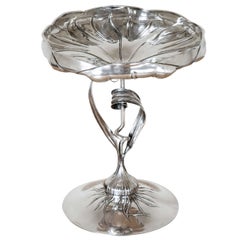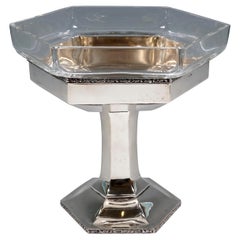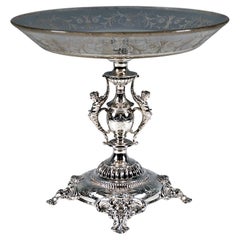Items Similar to Centerpiece, Sign Gallia, in Silver Plated, Art Nouveau, Liberty, France, 1900
Video Loading
Want more images or videos?
Request additional images or videos from the seller
1 of 22
Centerpiece, Sign Gallia, in Silver Plated, Art Nouveau, Liberty, France, 1900
$20,000
£14,840.78
€17,287.47
CA$27,840.15
A$31,002.51
CHF 16,135.09
MX$382,257.24
NOK 205,492.77
SEK 193,143.28
DKK 128,985.98
Shipping
Retrieving quote...The 1stDibs Promise:
Authenticity Guarantee,
Money-Back Guarantee,
24-Hour Cancellation
About the Item
Gallia centerpiece.
It was exhibited in the original Miami beach antique show and Palm beach "American International Fine Art Fair (AIFAF)" .
We have specialized in the sale of Art Deco and Art Nouveau and vintage styles since 1982.If you have any questions we are at your disposal.
Pushing the button that reads 'View All From Seller'. And you can see more objects to the style for sale.
Gallia
Created at the turn of the 20th century, at the time of the famous 1900 Paris World Fair,
the Gallia collection takes its name from a tin alloy of enormous importance in its time.
With its name harkening back to "Gaul" and the Gallic rooster as its mark and symbol, Gallia metal put the spotlight on French innovation once more.
This alloy was a milestone in Christofle's history. Making for high-quality, hard-wearing tableware, Gallia metal had the advantage of being robust and lasting longer. It could also be melted into steel moulds instead of being hammered into shape.
Gallia metal quickly became a springboard of ideas for Christofle. Collections were produced in bold, modern styles at a time when tableware and the decorative arts in general had been proposing the same Louis XVI, 18th and 19th century motifs in a loop since 1850.
This was the rise of Art Nouveau, which focused on Nature – or a stylised version of it. Following this, the 20th century saw an explosion of new styles, from Art Deco to Modernism.
The Gallia collection gave Christofle's master silversmiths the opportunity to experiment. As early as 1900, collaborations with extraordinary artists and designers under the Gallia name and Christofle's aegis made the rooster a symbol of the avant-garde movement – and so it would remain for a century.
Art. Nouveau
The name "Art Nouveau" in French means "new art". It is also known as Jugendstil in Germany. In contrast, in Vienna and in Italy, "Liberty style". The Art Nouveau designs used curvilinear sinuous asymmetrical lines, often based on plant forms. and feminine silhouettes. The style was used in architecture, interior design, glass, jewelry, sculpture, painting, posters and illustration. Introduced new materials such as opals and semi-precious stones Art Nouveau had its greatest impetus in the 1900 Universal Exhibition in Paris. After that, it spread throughout Europe, USA and Australia In Paris you can see the entries in metro are of Hector Guimard and Émile Gallé. Some artists are: Gustav Klimt, Charles Rennie Mackintosh, Alphonse Mucha, René Lalique, Antoni Gaudí and Louis Comfort Tiffany. Victor Horta had a decisive impact on architecture in Belgium. Each of them interpreted it their way.
Why are there so many antiques in Argentina?
In the 1880 – 1940 there was a grate wave of immigration encouraged by the periods of war that were taking place.
1st World War took place between 1914 and 1918
2nd World War took place between 1939 and 1945
The immigrants options were New York or Buenos Aires. Tickets were cheap and in Buenos Aires they were welcomed with open arms, as it was a country where everything was still to be done.
Argentina was the country of new opportunities, labour was needed and religious freedom was assured, in many cases the of the family travel first until they were settled and then the rest of the family members join them.
In the immigrant museum “Ellis Island Immigrant Building” in New York you can se the promotional posters of the boats that would take them to a new life.
Between the years 1895 and 1896, Argentina had the highest DGP (gross domestic product) per capita in the world according to the Maddison Historical Statistics index, this situation arose due to the large amount of food being exported to European countries, which were at war.
The Argentinean ships left the port of Buenos Aires with food, but they returned with furniture, clothes and construction elements, (it´s common to see this the old buildings of the historic neighbourhood of San Telmo, the beams with the inscription “Made in England)”, as well as many markets that were built in Buenos Aires, such us the San Telmo Market, whose structure was brought by ship and afterwards assembled in 900 Defensa Street.
With the great influence of European immigrants living in the country, the children of the upper classes travelled to study in France, resulting in the inauguration of “La Maison Argentinienne”, on 27th of June 1928, in the international city of Paris, which hosted many Argentinians that were studying in Frace.
It´s the fourth house to be built after France, Canada and Belgium, being the first Spanish-speaking one. Still in place today (17 Bd Jourdan, 75014, Paris, France). Many of the children of these wealthy families who attended international art exhibitions, museums and art courses abroad, took a keen interest in the European style. This is why Buenos Aires was at the time referred as “The Paris of South America”.
Between the years 1890 and 1920 more than a hundred Palaces were built on Alvear Avenue the most exclusive avenue in Buenos Aires. Today some of these palaces have been transformed into museums, hotels and embassies.
In the year 1936, the Kavanagh building was inaugurated, it was the tallest reinforced concrete building in South America.
During 1994 the American Society of Civil Engineers distinguished it as an “international engineering milestone”, and it´s now considered a World Heritage of Modern Architecture.
At the time was common to hire foreign architects such as Le Corbusier, who visited Buenos Aires/Argentina in 1929 and in 1948 he drew up the blueprints for a house built in La Plata City (which was declared a World Heritage Site).
In 1947, the Hungarian architect Marcelo Breuer designed “Parador Ariston” in the seaside city of Mar del Plata. After an Argentinean student at Harvard University convinced him to come to Argentina. He worked on an urban development project in the Casa Amarilla, area of La Boca.
The Ukrainian architect, Vladimiro Acosta, arrives in Argentina in 1928 and worked as an architect until que moved to Brazil.
Antonio Bonet, a Spanish architect who worked with Le Corbusier in Paris, arrives in Argentina in 1937, where he carried out several architectural works and in 1938 designs the well-known BFK chair.
Andres Kálnay, of Hungarian origin, made around 120 architectural masterpieces, among which the former Munich brewery stands out, he even made the furniture’s design.
The German architect, Walter Gropius, director of the Bauhaus, lived in Argentina, where he wrote articles for “Sur” magazine and founded in Buenos Aires, an architectural firm with Franz Möller, who was also an architect, where he built two houses.
At the same time several famous designers decided to immigrate to Argentina, among them we can find the well-known French designer, Jean-Michel Frank, who arrived in the country in 1940 and also worked for the Rockefeller family.
Special pieces were made, which were sold exclusively in the country, such as the well-known German company “WMF”, who sold their products by catalogue, which were chosen by the ladies of high society in the list of wedding gifts, as well as the pieces designed by Christofle.
The Swiss sculptor Alberto Giacometti, made special pieces for Argentinean mansions.
In 1904 the first Jansen branch outside Paris was established in Buenos Aires, as the Argentinean clientele demanded a large amount of furniture, from the end of the 19th century to the mid-20th century.
In 1970, the brand Rigolleau Argentina made pieces authorised by Lalique.
The brands Maple and Thompson also set up shop in the country.
The French plastic artist, Marcel Duchamp moved to Argentina in 1918-1919.
Glass signed Gallé, Charder, Leverre, Schneider, Muller and other French firms. They were bought in flower shops and were given to ladies with beautiful floral arrangements.
Some furniture manufacturers travelled to international fairs and bough the patterns to produce the furniture in Argentina, such as the furniture firm Englander and Bonta, who bought the patterns ins Italy.
It is worth mentioning that in Argentina we have the largest community of Italians outside of Italy, as it is estimated that 70 percent of the inhabitants have at least one Italian descendant, followed by Spanish immigrants.
The most Important furniture stores in Argentina:
Comte is founded in 1934 (under the direct management of Jean Michel Frank in 1940).
Nordiska (Swedish company established in 1934).
Churba in 1960, a company that brought foreign designers to present their furniture in the country:
Denmark: (Arne Jacobsen, Finn Juhl, Bender Madsen, Ejner Larsen, Poul Kjaerholm, Hans Wegner)
Sweden: (Hans Agne Jakobsson, Gustavsberg)
United States: (Herman Miller)
Finland: (Lisa Johansson, Folke Arstrom, Tapio Wirkkala, Alvar Aalto, Timo Sarpaneva)
Swedish Factory: (Orrefors)
Italy: (Littala, Vico Magistretti, Emma Gismondi, Gae Aulenti, Angelo Mangiarotti, Elio Martinelli, Gianna Celada, Angelo Mangiarotti, Mario Bellini, Carlo Scarpa)
Finland: (Olivia Toikka)
Plata Lappas (Lappas Silver): a goldsmith shop founded in 1887 in Argentina by Alcibiades Lappas of Greek origin.
In 2019, in Argentina took place “the Art Deco world congress”, in which we participated as hosts invited by Geo Darder, founder of the Copperbridge – Foundation, in which prominent people from all over the world attended to learn about Art Deco in Argentina.
Argentina currently has more than 100 Art Deco buildings and another 90 Art Nouveau buildings throughout the city of Buenos Aires.
Argentina is a country that has not been involved in many wars, which is why it has been a refuge for works of art and antiques from different periods of time, unlike European countries. That is way many collectors, museums and antique dealers from all over the world visit it, you should not miss the opportunity to visit this great country.
Laura Guevara Kjuder, architect.
- Creator:Gallia (Manufacturer)
- Dimensions:Height: 5.12 in (13 cm)Width: 19.69 in (50 cm)Depth: 10.63 in (27 cm)
- Style:Art Nouveau (Of the Period)
- Materials and Techniques:
- Place of Origin:
- Period:1900-1909
- Date of Manufacture:1900
- Condition:Wear consistent with age and use.
- Seller Location:Ciudad Autónoma Buenos Aires, AR
- Reference Number:Seller: M-411stDibs: LU6785232655042
About the Seller
5.0
Vetted Professional Seller
Every seller passes strict standards for authenticity and reliability
Established in 1982
1stDibs seller since 2022
36 sales on 1stDibs
Typical response time: <1 hour
- ShippingRetrieving quote...Shipping from: Hollywood, FL
- Return Policy
Authenticity Guarantee
In the unlikely event there’s an issue with an item’s authenticity, contact us within 1 year for a full refund. DetailsMoney-Back Guarantee
If your item is not as described, is damaged in transit, or does not arrive, contact us within 7 days for a full refund. Details24-Hour Cancellation
You have a 24-hour grace period in which to reconsider your purchase, with no questions asked.Vetted Professional Sellers
Our world-class sellers must adhere to strict standards for service and quality, maintaining the integrity of our listings.Price-Match Guarantee
If you find that a seller listed the same item for a lower price elsewhere, we’ll match it.Trusted Global Delivery
Our best-in-class carrier network provides specialized shipping options worldwide, including custom delivery.More From This Seller
View AllCenterpiece WMF, German, Jugendstil, Art Nouveau, Liberty, 1900
By WMF Württembergische Metallwarenfabrik
Located in Ciudad Autónoma Buenos Aires, C
Centerplace, WMF, German
WMF (Wurttembergische Metallwarenfabrik)
Electro- Wurtemberg Plate Company in Geislingen, Germany, internationally known today as 'WMF' initials of the compa...
Category
Antique Early 1900s German Art Nouveau Centerpieces
Materials
Crystal, Metal
Centerpiece, Jugendstil, Art Nouveau, Liberty, German, 1900, WMF
By WMF Württembergische Metallwarenfabrik
Located in Ciudad Autónoma Buenos Aires, C
Centerplace, wmf, German
We have specialized in the sale of Art Deco and Art Nouveau and Vintage styles since 1982.If you have any questions we are at your disposal.
Pushing the ...
Category
Antique Early 1900s German Art Nouveau Centerpieces
Materials
Crystal, Metal
Centerpiece, Art Nouveau, Liberty, German, 1910, WMF
By WMF Württembergische Metallwarenfabrik
Located in Ciudad Autónoma Buenos Aires, C
Centerplace, WMF
We have specialized in the sale of Art Deco and Art Nouveau and Vintage styles since 1982.If you have any questions we are at your disposal.
Pushing the button t...
Category
Vintage 1910s German Art Nouveau Centerpieces
Materials
Crystal, Metal
Centerpiece, France, Jugendstil, Art Nouveau, Liberty, 1900
Located in Ciudad Autónoma Buenos Aires, C
Centerplace
In silver plated bronze
We have specialized in the sale of Art Deco and Art Nouveau and Vintage styles since 1982. If you have any questions we are at your disposal.
Push...
Category
Antique Early 1900s French Art Nouveau Centerpieces
Materials
Bronze
Centerpiece WMF, German, Jugendstil, Art Nouveau, Liberty, 1900
By WMF Württembergische Metallwarenfabrik
Located in Ciudad Autónoma Buenos Aires, C
Centerplace, WMF, German
Page: 91 in the Book – Art Nouveau Domestic Metalwork from WMF Wurttembergische Metallwarenfabrik: The English Catalogue 1906 Hardcover.
*= Export-ware ...
Category
Antique Early 1900s German Art Nouveau Centerpieces
Materials
Crystal, Metal
Centerpiece, German, Jugendstil, Art Nouveau, Liberty, 1900
By WMF Württembergische Metallwarenfabrik
Located in Ciudad Autónoma Buenos Aires, C
Centerplace, WMF, German
Firms:
WMF G with ostrich = The first WMF impressed mark, used from 1880 to 1925 for silver-plated Hollow-ware, and until 1930 for export articles. The G...
Category
Antique Early 1900s German Art Nouveau Centerpieces
Materials
Crystal, Metal
You May Also Like
Gallia table centerpiece, Art Nouveau style in silver metal
By Gallia
Located in Autonomous City Buenos Aires, CABA
Gallia table centerpiece, Art Nouveau style in silver metal
Art Nouveau style centerpiece in silver metal with intricate details and a Ginkgo biloba leaf floral design. The edges are...
Category
20th Century French Art Nouveau Planters, Cachepots and Jardinières
Materials
Metal
Art Nouveau Silver Centerpiece
Located in London, GB
This stylish and beautiful centrepiece was made in Germany, circa 1900. It is a wonderful example of Art Nouveau, and the organic form ensures that, like an interesting sculpture, it...
Category
Early 20th Century German Art Nouveau Centerpieces
Materials
Silver
Simple and Elegant Art Nouveau Silver Centerpiece by Viennese Master, ca. 1900
By Viennese Manufactory
Located in Vienna, AT
Centerpiece in a honeycomb-shaped basic form, on a high, six-pointed foot, expanding into a hexagonal bowl, on the upper edge of the bowl and on the lower...
Category
Antique Early 1900s English Art Nouveau Sterling Silver
Materials
Silver
Viennese Art Nouveau Silver Centerpiece With Original Glass Bowl, Around 1900
By Vincenz Carl Dub 1
Located in Vienna, AT
Elegant silver centerpiece on a round, multi-stepped curved base with four square rocaille feet with putti heads in relief, finely chased shell and floral decoration, baluster-shaped...
Category
Antique Early 1900s Austrian Art Nouveau Sterling Silver
Materials
Silver
Silver Centerpiece With Engraved Glass Bowl, Hallmarked - Austria ca. 1895
Located in Lichtenberg, AT
Fantastic Art Nouveau silver centerpiece with glass bowl from the period in Austria around 1895. The artfully shaped base, elaborately made of 276,3 gramm solid silver, shows an outs...
Category
Antique Late 19th Century Austrian Art Nouveau Centerpieces
Materials
Silver
Art Nouveau Silver Centerpiece
Located in London, GB
This stylish and beautiful centrepiece was made in Germany, circa 1900. It is a wonderful example of Art Nouveau, and the organic form ensures that, like an interesting sculpture, it...
Category
Early 20th Century German Art Nouveau Centerpieces
Materials
Silver
More Ways To Browse
Glass Jewellery
Art Nouveau Opal
1920 S Silver Jewelry
Antique German Silver Jewelry
Spanish Art Nouveau Jewelry
Vintage Danish Silver Jewlery
900 Silver Jewelry
Danish Silver Jewelry 1960
Tiffany Art Nouveau Jewelry
Antique Jewelry Australia
Is Tiffany Jewelry Made In Italy
Spanish Art Deco Jewelry
Gismondi Jewelry
1940s Tiffany Jewelry
Antique Jewellery Canada
Tiffany Hammer
Tiffany Jewelry 1920s
Rooster Jewelry
